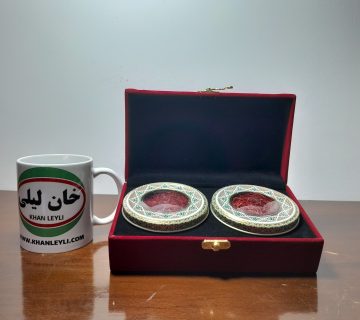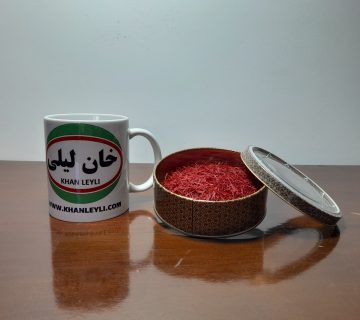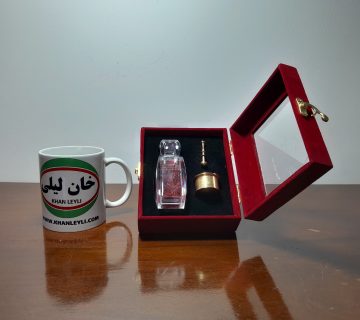Saffron export involves a series of intricate processes to ensure that the spice reaches international markets in optimal condition. The journey begins with careful cultivation and harvesting, where saffron crocus flowers are handpicked to extract the valuable threads. The spice undergoes processing, drying, and grading, with color, aroma, and thread length influencing its classification.
Quality control measures play a crucial role in saffron export, encompassing batch testing, adherence to international standards, and certifications. Ethical cultivation practices, sustainability considerations, and fair labor practices are increasingly emphasized to meet the ethical expectations of global consumers.
Packaging is a vital aspect of saffron export, with airtight, light-resistant containers preserving the spice’s freshness and protecting its delicate qualities. Saffron then enters the dynamic global market, where factors such as culinary trends, cultural significance, and consumer preferences shape its demand and consumption worldwide.
Several countries are involved in the export of saffron, with each contributing to the global supply of this valuable spice. The primary saffron-exporting countries include:
- Iran
– Iran is the largest producer and exporter of saffron globally. The country’s favorable climate and extensive experience in saffron cultivation contribute to its dominant position in the market. Iranian saffron, particularly varieties like Super Negin and Sargol, is highly sought after for its quality and vibrant color.
- India
– India is another significant player in the saffron market. The region of Jammu and Kashmir is known for producing high-quality saffron, often referred to as “Kashmiri Saffron.” Indian saffron has a distinctive flavor and aroma, and the country actively participates in the global saffron trade.
- Spain
– Spain is renowned for its production of saffron, primarily in the La Mancha region. Spanish saffron, often labeled as “Spanish Coupe,” is prized for its deep red color and strong aroma. Spain’s contribution to the saffron export market adds diversity to the available varieties.
- Greece
– Greece is also involved in saffron cultivation, particularly in the Kozani region. Greek saffron, known as “Krokos Kozanis,” holds a designation of origin, emphasizing its unique qualities. Greek saffron has gained recognition for its color, flavor, and adherence to traditional cultivation methods.
- Morocco
– Morocco has a growing saffron industry, with regions like Taliouine becoming known for their saffron production. Moroccan saffron, often labeled as “Taliouine Saffron,” has gained popularity for its distinctive characteristics.
Saffron Horizon: A survey of the global outlook for saffron exports
The saffron horizon stretches across continents, marking a fascinating survey of the global outlook for saffron exports. This vibrant spice, renowned for its rich color, unique aroma, and culinary prestige, embarks on a journey that transcends geographical boundaries.
From the sun-kissed fields of Iran, India, and Spain to the kitchens of diverse cultures, saffron’s global ascent is a testament to its universal allure. The survey begins in the fertile grounds where saffron crocus blooms, and skilled hands meticulously harvest delicate stigmas, setting the stage for the spice’s international odyssey.
Color grading becomes a pivotal aspect, with distinctions between Super Negin, Sargol, and Pushal guiding the spice’s trajectory in global markets. The unique aroma and flavor profile contribute to its desirability, creating a demand that spans continents.
Ethical cultivation practices and sustainability considerations play a crucial role in the survey of saffron’s global outlook. Consumers worldwide increasingly value not only the quality of the spice but also the ethical and environmental responsibility of its production.
As saffron packages are prepared for export, each container becomes a vessel carrying the cultural richness and gastronomic sophistication of its origin. The global survey of saffron exports reveals a spice that transcends borders, enriching culinary landscapes and creating a harmonious tapestry of flavors across the world.
Odyssey of saffron: chart of success in global export market
The odyssey of saffron, a journey that begins amidst the vibrant hues of crocus flowers, charts a course towards unparalleled success in the global export market. This spice, known for its distinct color, aroma, and flavor, undertakes a meticulous expedition from cultivation to international prominence.
The success story unfolds in the fields where saffron crocus blossoms grace the landscape. Handpicked with precision, each delicate stigma sets the stage for the spice’s odyssey. Post-harvest, a careful process of extraction and drying ensues, preserving the saffron’s brilliance.
Color grading becomes a crucial navigation point, distinguishing saffron into categories that echo its potency and purity. The aroma, a signature fragrance that elevates culinary experiences, adds to the allure of this golden spice.
The odyssey extends beyond cultivation, embracing ethical practices and sustainability. Stringent quality control measures safeguard the saffron’s excellence, ensuring that each thread meets predetermined benchmarks before embarking on its global sojourn.
As saffron packages are sealed for export, they become vessels carrying the culmination of nature’s bounty and human expertise. The success charted in the global market is not merely a testament to the spice’s quality; it is an odyssey that weaves together dedication, craftsmanship, and a commitment to delivering saffron’s brilliance to kitchens worldwide.
Exporting Brilliance: Ensuring Quality in Saffron for Global Markets
saffron stands as a radiant gem, sought after for its vibrant color, distinct aroma, and rich flavor. As saffron transcends borders, the journey of exporting this brilliance becomes a meticulous quest for perfection. This essay delves into the intricate journey of quality saffron, exploring the measures taken to ensure global excellence.
Cultivation and Harvesting:
The journey begins in the sun-kissed fields where delicate saffron crocus flowers unfurl their deep purple petals. Quality saffron is cultivated with meticulous care, requiring precise timing and attention to detail during the harvesting process. Each stigma is handpicked with precision, setting the stage for the brilliance that will later grace tables across the globe.
Processing and Drying:
Post-harvest, the saffron threads undergo a delicate process of extraction and drying. This phase is a critical juncture where the quality of saffron is preserved or compromised. Gentle handling, optimal drying conditions, and a commitment to purity are fundamental to exporting saffron that retains its brilliance from farm to market.
Color Grading and Aroma Profiling:
Quality saffron undergoes rigorous color grading, distinguishing it into categories such as Super Negin, Sargol, and Pushal. The vibrant red hues of the saffron threads are not just visually captivating but serve as an indicator of its purity and potency. Simultaneously, aroma profiling ensures that the saffron emanates the signature fragrance that elevates culinary experiences.
Ethical Practices and Sustainability:
The journey of quality saffron extends beyond its sensory attributes; it encompasses ethical cultivation practices and sustainability. Exporters committed to global excellence prioritize fair labor practices, environmental stewardship, and community well-being. Such practices resonate with conscientious consumers, adding a layer of integrity to the exported brilliance.
Stringent Quality Control Measures:
Before embarking on its global journey, quality saffron undergoes stringent quality control measures. Batch testing, adherence to international standards, and meticulous inspection become the guardians of saffron excellence. Ensuring that each consignment meets predetermined quality benchmarks is paramount for building and maintaining trust in global markets.
Packaging as a Prelude to Excellence:
The packaging of saffron is not just a means of protection but a prelude to excellence. Airtight, light-resistant containers safeguard the saffron threads, preserving their freshness and preventing degradation. Packaging becomes the first impression, signaling to the world that what lies within is a testament to quality and care.
Global Export and Market Trust:
As quality saffron sets sail for international markets, it carries with it the legacy of its origin. Transparent communication, certification, and compliance with export regulations become the conduits of market trust. Exporting brilliance is not just about the product; it is about the story, the commitment, and the journey encapsulated in each golden thread.








No comment